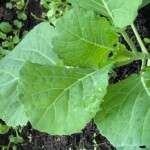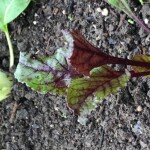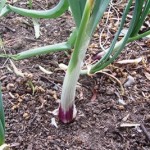Gardening under Glass
This year I planted a winter garden. I’m growing most of my vegetables in cold frames.
When the water outside is frozen and the grass and rooftops glisten with frost, it’s a thrill to see lush green vegetables growing under glass in my garden.
Vegetables like spinach, broccoli, French breakfast radishes, bok choy, and sugar snap peas are thriving where they’ve been planted in good soil under a cold frame.
Cold frames are easy to construct. Basically, they are transparent covers over a prepared bed of soil. Mine are made of old, salvaged windows that crank open and are mounted atop some of our four-by-six-foot raised beds. Cold frames protect against rain, wind, ice, and snow. The frames can even protect somewhat against infestation by common pests.
It’s important to provide ventilation by opening the cold frame on warm days. Under glass, the heat intensifies and could burn your tender plants. When night-time temps plunge, keep the cold frame closed. You can pile further insulation against the frames using bales of straw or hay or bags of raked leaves.
Inside these protected glass spaces this time of year (in deep December), a variety of cool-season crops can be cultivated. Consider planting seedlings of green leafy plants like kale, mustard greens, cabbages, turnips, radishes, carrots, beets, lettuces, broccoli, and onions.
Our farmette is located in Zone 15. We live in a sheltered valley inland from the San Francisco Bay and east of the Berkeley hills. We get really hot summers with temperatures that climb into triple digits. In winter, we get frost and freezes and more rarely a dusting of snow.
Long after other gardeners in our area have put away their trowels and shovels, I’m still at it. Gardening puts food on the table. When we are quarantining ourselves from others, we can focus on our passion for gardening and grow cool-season crops in late fall, early spring, and, yes, even in winter with the help of a cold frame or two.
_______________________________________________________________
If you enjoy reading about country living, gardening, or keeping chickens or bees, check out my series of cozy mysteries that are chocked full of tips, recipes, and facts about living on a farmette.
Also, check out my popular self-help, wellness, and spirituality books. All are available online or wherever books are sold and are available in a variety of formats.

More than 150 rituals for sound mind, strong body, and meaningful connections to the people around you
The Quiet Beauty of a Winter Garden
There is a quiet beauty in a winter garden. You must endure cold to appreciate it. On my farmette, there’s also fog and wind and misty rain. But as you gaze in mindfulness, the rewards come.
When trees are bare, you can appreciate the beauty of their scaffolding, branching habits, and fruiting spurs. There is an attractiveness about tree bark that is rough or smooth and colored in earthy hues of green, gray, or reddish brown. Bare trunks and branches provide visual interest until blossoms and blooms break in spring.
With pruning done and leaves removed, the roses rest. Birds gather at feeders and frolic in the fountains. Beneath the soft, damp earth, roots are taking in nutrients to prepare the fruit trees for a surge of growth when warmer days arrive.
The garden is a place to conjure memories and ponder life and destiny. Goethe, the German playwright, poet, and novelist wrote that “Sometimes our fate resembles a fruit tree in winter. Who would think that those branches would turn green again and blossom, but we hope it, we know it.”
Winter is the perfect time to contemplate the tap root of your being and to think and and dream and plan for what will blossom in your life when warmth and light returns. French philosopher and author Alfred Camus wrote, “In the depths of winter, I finally learned that within me there lay an invincible summer.”
I have a simple ritual of visiting my winter garden. I prepare a cup of hot water with juice of half a lemon and a tablespoon of honey or sometimes just a cup of coffee or tea. Then with cup in hand, off I go to inspect the fruit trees, the bare grape and berry vines, and the soil turned in raised boxes waiting to receive kitchen herbs. This ritual inspires me and silently powers me up with hope and energy.
Perhaps you have a similar winter ritual. If not, consider checking out my newest nonfiction book, RITUALS FOR LIFE and plant something in the earth or the garden of your psyche that holds the promise of bearing fruit in its own perfect time. Now is the time to greet each new winter day for the blessings it brings and appreciate the stark beauty of Nature.

More than 150 rituals for sound mind, strong body, and meaningful connections to the people around you
 Facebook
Facebook Goodreads
Goodreads LinkedIn
LinkedIn Meera Lester
Meera Lester Twitter
Twitter












